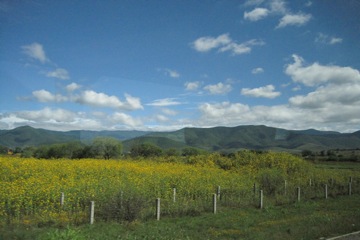
Feature and Above Photo: Fotos Oaxaca
We piled on the bus like a group of awkward middle-aged kindergarteners, fumbling around and smacking our heads against the plastic TV’s. My mom, sister and I, the slightly skeptical cool kids, formed a little grouplet in the back of the bus. There must’ve been around thirty of us altogether, masses of white flesh, sandals, and outdoor wear. The Spanish teacher proceeded to make very slow, meticulous announcements about where we were going and how long it would take to get there, and the middle-aged gringos shuffled around in their seats, chatting.



